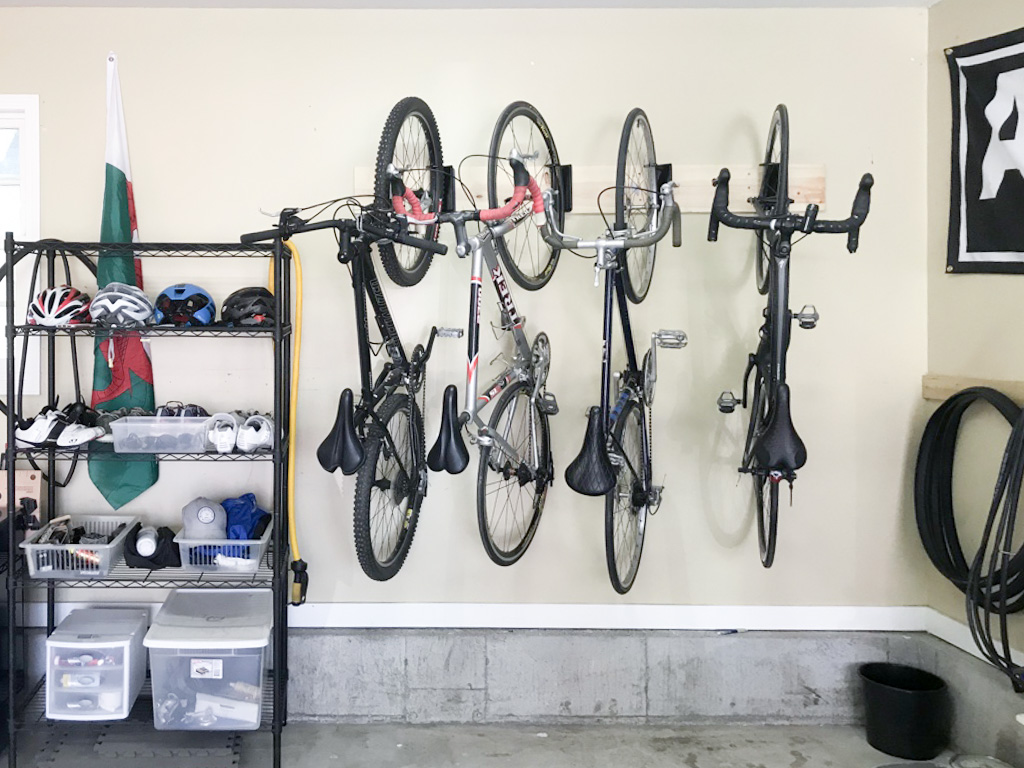For some people, the garage is an afterthought—just a place to toss anything you don’t want in the house or to precariously stack every bike helmet and soccer cleat the kids have outgrown. But what if, instead, your garage worked for you? Giving some time and thought to what you store in your garage—and how and where it’s stored—can help make your home safer, more livable, and more functional!
Step One: The Power Purge
Did you know that 25% of homeowners have so much clutter that they can’t fit a car in their garage? Don’t waste your time organizing things that shouldn’t even be taking up space. Your first step—and it’s a BIG one—is to part with your excess items. We know this can feel overwhelming, which is why we have spelled out exactly how to tackle this project in our Power Purge blog post. Remove items from your garage that you no longer need, are broken, or are remnants of some forgotten project you don’t intend to come back to. Once you’ve cleared out the excess, you will have a much easier time organizing the rest.
Step Two: Sort into Zones
The most efficient way to organize your garage is to group similar items together into zones that make sense to you. Not only will this help you find items when you need them, but using zones can also help every household member know at least the general area of where to put things away. You’ll need to tailor your zones based on your needs and climate, but here are a few common zones to get your wheels turning:
- Sports equipment
- Pool/Beach toys
- Gardening supplies
- Tools and hardware
- Seasonal decorations
- Auto maintenance
- Camping gear
- Cleaning supplies
- Recycling and trash
- Snow removal
Step Three: Go Vertical
Once everything has been sorted into logical groups, you can figure out which storage areas in your garage make the most sense for each category of items. The one piece of advice we cannot say enough is to KEEP THE FLOOR CLEAR! Invest in shelving, hooks, wall-mounted baskets, and even overhead storage racks to maximize your vertical space. If you are like most homeowners, your garage troubles began with a ring of clutter stacked around each wall. Getting everything off the floor and onto walls and shelves will do more than anything else to make your garage more efficient.
Step Four: Safety Check
The garage is home to so many tools, liquids, and other substances that need to be stored safely. As you finalize your amazing work of organizing your garage, take a few minutes to double-check for potential hazards. Start with these main categories, but also keep an eye out for other hazards that are unique to your situation:
- Blades—Make sure anything with a blade (whether a large chop saw or a box cutter) is securely stored and out of reach of kids.
- Liquids—Lighter fluid, antifreeze, pesticides, paint thinner and other potentially hazardous—or just messy!—liquids need special attention to make sure they aren’t at risk of being knocked over or grabbed by little hands.
- Tipping—If you are lining your walls with shelves full of heavy things, ensure those shelves are firmly secured to the walls to prevent tipping. Triple-check the security of any heavy items stored or suspended above your head.
- Tripping—Walk the perimeter of your garage and look for potential tripping hazards. Make sure all exits from the garage are accessible.
- Fire extinguisher—Every garage needs a fire extinguisher. Make sure yours is current and easily accessible—not on a high shelf behind a hundred other things!
Cleaning out and organizing your garage definitely isn’t easy, but it’s oh-so-worth-it in the end. And if you get stuck somewhere in the process, you know you can always call in the Bees to get you back on track!



